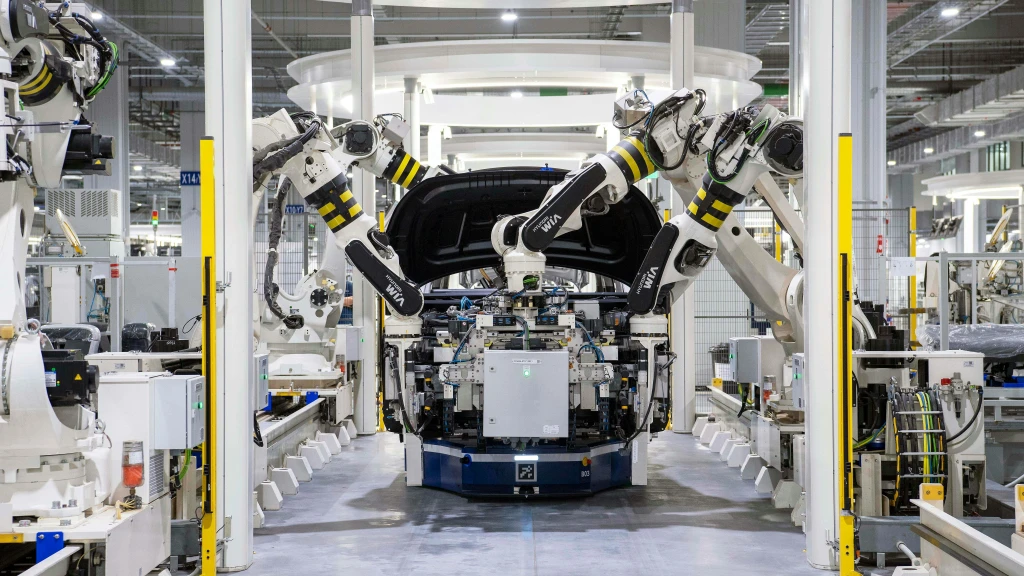Innovations in Robotics and Automation in Canada's Manufacturing Industry
Visits: 1031

Innovations in Robotics and Automation in Canada's Manufacturing Industry
Canada has always been a front-runner in adopting cutting-edge technology to enhance its industries. In recent years, innovations in robotics and automation have transformed the manufacturing sector, making it more efficient, cost-effective, and competitive on a global scale. This article explores the latest trends and innovations in robotics and automation within Canada’s manufacturing processes and how these advancements are shaping the future of the industry.
The Rise of Robotics in Manufacturing
What is Robotics?
Robotics involves the design, construction, operation, and use of robots—machines that can perform tasks typically done by humans. These robots are often used in manufacturing to handle repetitive, dangerous, or precise tasks.
Benefits of Robotics in Manufacturing
- Increased Efficiency: Robots can operate 24/7 without breaks, leading to higher productivity.
- Cost Reduction: While the initial investment is high, robots reduce long-term operational costs.
- Improved Quality: Robots provide consistent output with minimal errors.
- Safety: Robots can perform hazardous tasks, reducing the risk of workplace injuries.
Key Innovations in Robotics
1. Collaborative Robots (Cobots)
Collaborative robots, or cobots, are designed to work alongside humans. Unlike traditional industrial robots, cobots are safe to use around people without the need for safety cages. They are equipped with advanced sensors and AI to interact safely with their human counterparts.
Example:
Universal Robots' UR Series: Widely used in Canadian manufacturing, these cobots are known for their ease of use and versatility.
2. Artificial Intelligence (AI) and Machine Learning
AI and machine learning enable robots to learn from their environments and improve their performance over time. These technologies allow robots to adapt to new tasks without human intervention, making them more flexible and efficient.
Example:
Kinova's AI-Powered Robotic Arms: Montreal-based Kinova uses AI to enhance the functionality of their robotic arms, making them suitable for complex manufacturing processes.
3. Autonomous Mobile Robots (AMRs)
AMRs are capable of navigating through facilities without human guidance. They use sensors, cameras, and onboard computers to understand their surroundings and move materials or products within the manufacturing plant.
Example:
OTTO Motors' AMRs: These robots, produced by Ontario-based OTTO Motors, are revolutionizing material handling in factories.
Automation in Manufacturing Processes
What is Automation?
Automation involves using technology to perform tasks with minimal human intervention. In manufacturing, this can range from automated production lines to sophisticated systems that monitor and control processes.
Benefits of Automation
- Increased Productivity: Automated systems can work faster and more consistently than humans.
- Cost Savings: Automation reduces labor costs and minimizes errors that can lead to waste.
- Enhanced Quality Control: Automated systems can perform precise inspections, ensuring high-quality standards.
Key Innovations in Automation
1. Industrial Internet of Things (IIoT)
The IIoT connects machines and systems through the internet, allowing for real-time data collection and analysis. This connectivity helps manufacturers monitor equipment, predict maintenance needs, and optimize operations.
Example:
Siemens' MindSphere: This cloud-based IIoT platform helps Canadian manufacturers optimize their production processes and reduce downtime.
2. Advanced Robotics Process Automation (RPA)
RPA uses software robots to automate routine administrative tasks such as data entry, inventory management, and order processing. This allows human workers to focus on more strategic activities.
Example:
Blue Prism: This company provides RPA solutions that are widely adopted by Canadian businesses to streamline back-office operations.
3. Smart Factories
Smart factories leverage advanced technologies such as AI, IIoT, and big data analytics to create highly efficient, flexible, and adaptable production environments. These factories can quickly respond to changes in demand and production requirements.
Example:
GE's Brilliant Factory: GE’s smart factory initiatives in Canada use advanced technologies to enhance manufacturing processes, reduce waste, and improve productivity.
The Future of Robotics and Automation in Canada
Canada's investment in robotics and automation is set to grow as manufacturers seek to stay competitive in a global market. The government supports these advancements through various grants and initiatives, fostering innovation and adoption across the industry.
Challenges and Opportunities
- Skills Gap: There is a need for a skilled workforce to manage and maintain advanced robotic and automated systems.
- Initial Costs: High initial investment can be a barrier for small and medium-sized enterprises (SMEs).
- Global Competition: Canadian manufacturers must continually innovate to stay ahead of international competitors.
Government Support
The Canadian government offers several programs to support innovation in manufacturing, such as:
- Strategic Innovation Fund: Provides funding for large projects that drive innovation and create high-quality jobs.
- Innovative Solutions Canada: Supports small businesses in developing innovative products and services.
Conclusion
Innovations in robotics and automation are transforming Canada’s manufacturing sector, driving efficiency, reducing costs, and improving quality. As technology continues to evolve, Canadian manufacturers must embrace these advancements to maintain their competitive edge. With ongoing support from the government and a focus on upskilling the workforce, the future of robotics and automation in Canadian manufacturing looks promising.
Table: Key Innovations and Examples
| Innovation Type | Key Innovation | Example Product/Company | Benefits |
|---|---|---|---|
| Collaborative Robots (Cobots) | Safe, versatile robots | Universal Robots' UR Series | Improved safety, ease of use |
| AI and Machine Learning | Intelligent robotic systems | Kinova's AI-Powered Arms | Enhanced functionality, adaptability |
| Autonomous Mobile Robots (AMRs) | Self-navigating robots | OTTO Motors' AMRs | Efficient material handling |
| Industrial IoT (IIoT) | Connected machines and systems | Siemens' MindSphere | Real-time monitoring, optimized operations |
| Robotic Process Automation (RPA) | Software robots for admin tasks | Blue Prism | Streamlined back-office operations |
| Smart Factories | Advanced, adaptable production environments | GE's Brilliant Factory | Increased efficiency, reduced waste |
For more insights and updates on innovations in the manufacturing industry, visit our blog regularly. Stay ahead in the business world with the latest trends and technological advancements.
